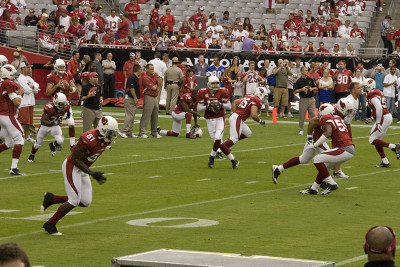
Last season, NFL kickers made all but eight extra points after touchdowns and recorded a 99 percent success rate in the regular season. This year, kickers have already missed nine relative chip shots since the league changed the point-after’s distance from the 2-yard line to the 15-yard line. Let me repeat that for you: NFL kickers have already missed more extra points this year than they missed all of last year.
This statistic is exactly what the NFL and its teams want. They want the extra point to be an important part of football and not a guarantee. While many football traditionalists do not like the change in the game, the newly-constructed extra point is actually good for football. Before this new rule change was implemented, extra points were a minor part of a kicker’s job. Now, extra point-kicking can and will be just as vital as field-goal-kicking and will heighten the drama on a used-to-be boring play.
The NFL’s job is to provide the best product of football they can in order to make money and entertain the general public that is watching the games. That means the league has an incentive to make every play competitive and entertaining to each team’s respective fan base.
In an article about the new extra point rule changes, Houston Texans general manager Rick Smith cites fan excitement as one of the primary considerations for the rule change.
“We tried to add some skill to the [extra point],” Smith said. “… And then the other element is how do we create a more exciting play? And so to give the defense an opportunity to score, it adds an element there, as well as obviously incentivizing teams to go for two.”
Smith hits on all the right points regarding the new point-after rule. The once-easy chip shot now becomes a skill play in which kickers must show their natural talent and their ability to perform a still seemingly easy task under heightened pressure.
This need for a reliable kicker is perfectly exemplified by this year’s Pittsburgh Steelers team. In their first preseason game against the Minnesota Vikings, kicker Shaun Suisham tore his ACL, forcing general manager Kevin Colbert to sign veteran Josh Scobee.
In Week 1, against the New England Patriots, Scobee cost his team six points by missing two field goals. Because of their new kicker’s inability to perform, the Steelers decided to go for the 2-point conversion twice in the earliest part of their game against the San Francisco 49ers Sunday. While the game was a blowout in favor of the black and yellow, in a more competitive game those two additional points could have proved to be very important.
The new rule also permits the defense to score if the failed extra point is recovered by the defense or if they force a turnover during the 2-point conversion. These new aspects of non-guaranteed points and the chance to score defensive points forces and incentivizes the defense to work hard to stop the points after. This new-found competitiveness adds a sense of importance to a play that had been written off in prior years.
By creating the new extra point rule, kickers will become more of an important member of each NFL team. Players like Stephen Gostkowski, Sebastian Janikowski and Robbie Gould, all of whom command the highest salaries for kickers in the NFL, and similar kickers, will prove more valuable, which will in turn allow other position players throughout the league to be rewarded more money for their efforts.
With the new extra point rule in effect we will be able to see another competitive play in the great game of football. And at the end of the year, when the league reviews the effectiveness of the rule, we will see if those 13 extra yards are truly here to stay.

